Search: Lions 09 Strike Move 5
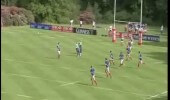
Lions 09 strike move 5
Developing play in backs
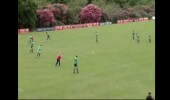 0:45
0:45
Lions 09 - Strike Moves
The Lions drill for developing awareness of attack and defence options
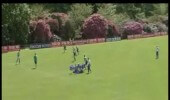 0:11
0:11
Lions 09 strike moves 4
Developing attack moves through the backs
To watch over 2500+ videos join now for free!
JOIN NOW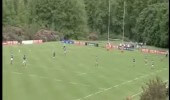
Lions 09 strike move 11
Developing back play in attack
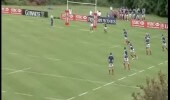 0:22
0:22
Lions 09 strike move 8
Developing play through the backs
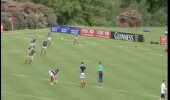
Lions 09 Strike Moves 07
Developing attacking plays through the backs
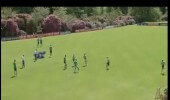 0:07
0:07
Lions 09 Strike Moves 3
Developimg attack plays through the backs
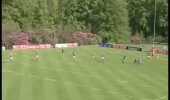
Lions 09 strike moves 6
Developing attacking plays through the backs
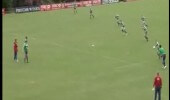
Lions 09 strike moves 10
developing plays in attack
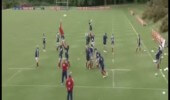 0:26
0:26
Lions 09 lineout 5
Lineout variation and development
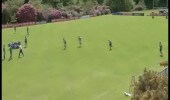 0:11
0:11
Lions Strike Moves 1
Developing attack plays through the backs
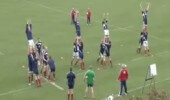 0:47
0:47
Lions 09 - Lineout Movement
A dynamic practise for speed and quality of lifting in lineouts. This exercise can be used for 15's and 7's and for different age groups. The coaches can vary the distance of the cones and progress to both lifters moving. Coaches can add some fun by making it a competition. Key factors : The jumper must jump - Core body strength - Keep body stiff and straight - Lifters work together - Lock out arms - Bring the jumper down safely
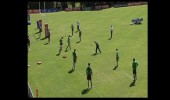
Lions 09 - Lions speed and tracking the player
Developing linespeed, footwork and tracking
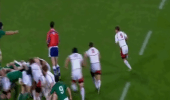 0:27
0:27
Men's - Strike Moves 3
Men's - Strike Moves 3
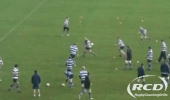 0:29
0:29
Strike Move - Slice
A good 'go to' strike move for all players 1-15 to know. Passing the ball behind a decoy runner can commit and confuse defenders, hopefully creating holes to attack.
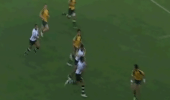 0:21
0:21
Junior - Strike Moves 1
Junior - Strike Moves 1
 0:21
0:21
Women's - Strike Moves 1
Women's - Strike Moves 1
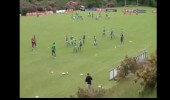 0:33
0:33
Lions 09 backs support lines 2
Lions 2009 support and continuity work
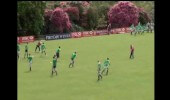 0:44
0:44
Lions 09 Backs defence 2
A clip from the 2009 Lions
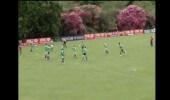
Lions 09 defence 04
Lions 2009 defensive systems
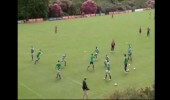 1:04
1:04
Lions 09 Backs defence 3
A clip with a progression on defensive systems from the 2009 Lions Tour
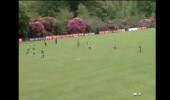
Lions 09 Attack plays 2
A clip on attacking options from the 2009 Lions
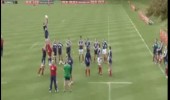 0:17
0:17
Lions 09 Lineout 1
The Lions practice their lineouts
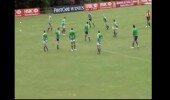 0:37
0:37
Lions 09 backs defence 4 man on man
Lions 2009 defence clip
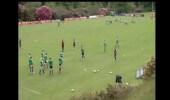 0:33
0:33
Lions 09 Backs support lines 3
Lions 2009 support drills, with a progression
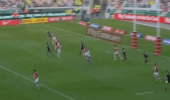 0:26
0:26
Sevens - Strike Moves 2
Players can strike from any location on the pitch, in this clip the Red team relax thinking they have the attackers behind their own posts, however a strong scrum, good pass and great step create the gap to go through, the next 95 metres is all about speed and fitnes. Key factors : Space beetween attackers - Good pass - Side step - Speed - Stamina
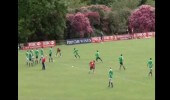 0:57
0:57
Lions 09 Backs defence 1
A clip from the 2009 on defence systems
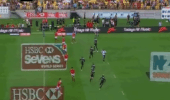 0:24
0:24
Sevens - Strike Moves 1
A simple but effective attack from a scrum. Three good passes provides the winger to run past his defender to score. Notice how the first reciever is directly behind the scrum and not to the side, (This makes the pass from the scrum easier when under pressure). Key factors : Position of 1st reciever - Run straigh and wide spin pass - Speed of the runner

Junior - Strike Moves 2
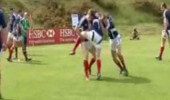 1:10
1:10
Lions 09 - Double-tackle
A good practice to work on stopping an effective ball carrying player
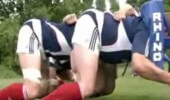 0:56
0:56
Lions - 3&5 man scrum practice
A progression from the 3 man scrum - developing body shape and positions
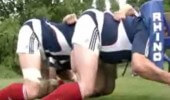 0:23
0:23
Lions 09 - 3-man Scrum Practice
Develop the front row as a foundation for the building of the scrum

Men's - Strike Moves 2
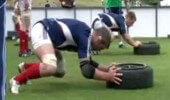 0:39
0:39
Lions 09 - Driving Body-position
A great practice for ALL players in the scrum to adopt the best position to drive from. You can use tackle bags as well as tyres
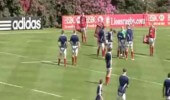 0:51
0:51
Lions 09 - Phase Play
This team play practice requires the team to be able to attacke with width and focusing on ball retention
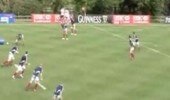 0:47
0:47
Lions 09 - Team Defence
Practice of team defence is important for reinforcing effective systems of defence that require aspects such as communication, pressure and drifting
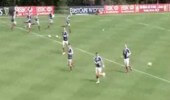 0:23
0:23
Lions 09 - Support & Attack
The ability to create attacking situations quickly is fundamental to creating pressure
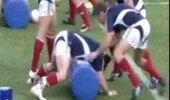 0:47
0:47
Lions 09 - Clearing the tackler away
With the new adjustments around the tackle zone, what variation would you adopt now so that this drill is now legal?
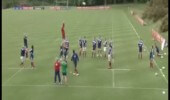 0:23
0:23
Lions 09 lineout 3
Lineout variation and practice
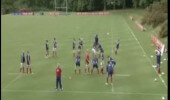 0:23
0:23
Lions 09 Lineout 4
Lineout variation and practice

Women's - Strike Moves 2
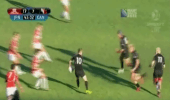 0:24
0:24
Men's - Strike Moves 4
A great axample of how to use effective passing and dummy runners to attack from scrums. Key factors ; Solid scrum - Accurate spin pass - Load calling from dummy runners - Different angles of running - Wide flat pass - Speed and swerve from the final player
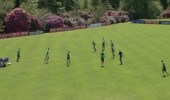 0:17
0:17
Lions 09 - backline defence - centre pitch
Where you are on the pitch can determine the defensive system that you can employ.
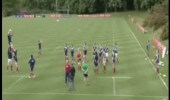 0:29
0:29
Lions 09 lineout 2
Lineout variation and practice
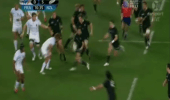 0:25
0:25
Men's - Strike Moves 1
 0:18
0:18
Lions 09 - tactical kicking drill - kicking from 12
Tactical kicking can be undertaken by different players
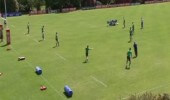 0:16
0:16
Lions 09 - backline defence in own 22
Where you are on the pitch can deterrmine the defensive system you play
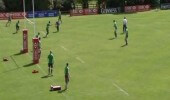 0:14
0:14
Lions 09 - backline defence inown 22 option 3
Where you are on the pitch can determine you defensive system
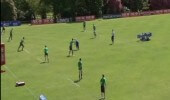
Lions 09 - backline defence in own 22 option 2
Defensive systems change according to where the team is on the pitch
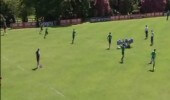 0:33
0:33
Lions 09 - tactical kicking drill 2 blindside
A practice for developing understanding the role of chasers and counter kicking
 0:12
0:12
Lions 09 - tactical kicking - dropping back for kick-return
Positioning ready for the kick return is a systematic approach to countering pressure
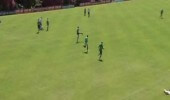 0:13
0:13
Lions 09 - tactical kicking drill - chase and return
Developing an awareness of applying pressure through an effective kick chase system
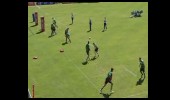 0:38
0:38
Lions 09 - linespeed defence drill
Developing linespeed is fundamental to applying pressure to an attack line
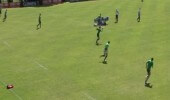 0:24
0:24
Lions 09 - tactical kicking drill 1
Developing an awareness of how to apply pressure through an effective kick chase policy
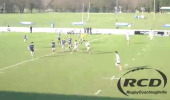 0:28
0:28
Strike move from Lineout
RGS Guildford secure lineout ball and perform a 'circle' ball, with the fly-half looping around the centre who pops the ball back to him. This is to draw in defenders, to create space out wide. The winger is able to exploit this space to complete the try.
 6:04
6:04
Lions Memories - Part 1/2
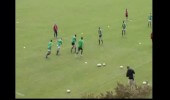 0:48
0:48
Lions - Attacking channells
From the Lions 2009 tour, a support drill in a channel to encourage the ball carrier to move the defender and make space for the support player
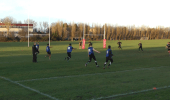 0:59
0:59
Broncos 6 - Attack to Defence 8 v 5
A combination of skills are tested, both technical and tactical with the defenders moving from a passing activity to defending 8 attackers. The coach can change the attack with different starting points and number of attackers
7. 5 Pass Game
7. 5 Pass Game
Tackle technique 5
Tackle technique 5
 5:02
5:02
Warren Gatland as Lions Head Coach
 4:19
4:19
Geech - Lions Coaches were Years Ahead
Were the Lions coaches ahead of the game. The 1997 coaches discuss tackle techniques that are only being implemented now
Scrum Factory - 5. TOP Towels & Bands
The use of towels and bands are used to develop front row posture just before engagement when the body weight is forward and balance is important
5. Blindside Game
 2:38
2:38
Geech - Lions Tactics

HSBC - Gatland Appointed Lions Coach
Former British & Irish Lions Jason Robinson, Gavin Hastings and former Wales international Jonathan Davies commenting on the appointment of Warren Gatland as Head Coach of the 2013 British & Irish Lions Tour to Australia.
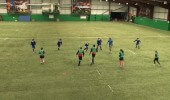 1:23
1:23
5-a-side Touch
To put the passing and support drills into practice, end with a game of 5 v 5 touch. Few players on each team will mean more time with the ball for each.
Scrum Factory - 10. Put in and Strike
Practicing the strike can be developed with the left side triangle, so the key players involved are working together
 3:07
3:07
Lions Memories - Part 2/2
 0:39
0:39
Women's - Turnovers and move the ball 1
Women's - Turnovers and move the ball
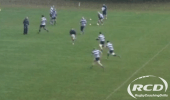 0:43
0:43
Backs Move - Decoy & DSM
This backs move combines a decoy 'slice' pass with the DSM (dummy-switch, miss pass) to confuse the defence. The first decoy runner and dummy-switch should commit the inside players, keeping the defensive line narrow. The space out wide is then exploited with the miss pass.
 0:25
0:25
Men's - Turnover and move the ball 4
Men's - Turnover and move the ball 4
 0:21
0:21
Men's - Turnover and move the ball 1
Men's - Turnover and move the ball
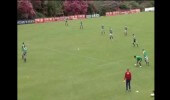 0:30
0:30
Lions - Backs options from scrum
Lions 2009 clip on attacking options
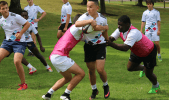 4:43
4:43
Rucking - Live With 5
A clever and competitive practise using 5 players that involves passing, tackling and then making the crucial decision of what to do at the breakdown. This can be done from Under 12's upwards
 3:10
3:10
Kicking - Striking The Sweetspot
If you strike the ball in the right place you are halfway to delivering an accurate kick. The "Sweetspot" of the ball is significantly larger than you may think. This clip explains where the sweetspot is and how to get a good connection
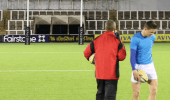 1:53
1:53
Kicking - Striking The Ball
Accurate kicking requires an understanding of how the foot should strike the ball. Expert kicking coach Dave Walder delivers a coaching clinic detailing the key factors and steps coaches should follow
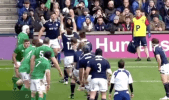 3:48
3:48
Scotland New Lineout Move
Scotlands clever score from the line out v Ireland was a great example of coaches or players being innovative and looking at new ways to do things. This clip shows a few slightly different uses for placing your scrum half at the front of the line out. It is just ideas and about pushing the boundaries of the laws
 8:07
8:07
My Dream Lions Team
 2:15
2:15
Geech - Bringing a Lions Squad Together
Step 5 - Introducing the 3 v 3 Scrum
Foul Play Clip 5 - Dangerous Tackle
 0:11
0:11
Defence - 5. Team Mate Awareness
It may be that a slower forward is in the midfield defence between two faster players
These faster players should to be aware that they may need to close the space around the slower defender
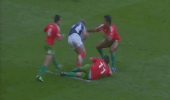
Sevens - Turnovers and move the ball 3
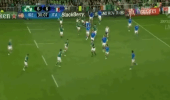 0:18
0:18
Men's - Turnover and move the ball 2
Strong defence and a turnover allows two quick passes, (One long pass), and then attack the defence. The two passes have changed the channel of attack by 30 metres.
Key factors : Tackle and stay on your feet - Long quick pass / spin pass - Communicate loudly - Support the ball carrier on his shoulder
Materiality Clip 5 - Scrum Binding
Advantage Clip 5 - Penalty Advantage Territorial
Contextual Clip 5 - Tackle
Infringements Clip 5 - Kick Off Not 10

Junior - Turnovers and move the ball
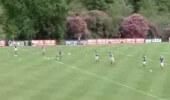 0:23
0:23
British lions - support & attack drill 1
This drill illustrates how attack can go from narrow channels to wide play very quickly, and players should practice this continually
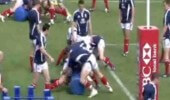 1:03
1:03
British Lions - tackle then Jackal then clear out
Many of these drills require repetition, here we see how the importance of good body shape in contact can be practiced as both the jackler and those clearing out the tackle
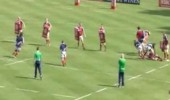 0:37
0:37
British Lions - Team play
The practice of a semi opposed team run is important for understanding by the players of their roles and responsibilities
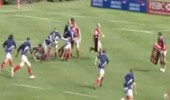
British lions - team play 3
team play practice in a semi-opposed style assists the players in learning their roles and responsibilities
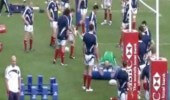 1:01
1:01
British Lions - tackle then jackal
It is important to practice not only the body shape of the defender but also those doing the clearing out of the defender
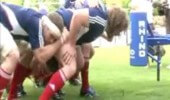 0:39
0:39
Lions - Full scrum practice
Full scrum practice - essential at all levels of the game
5. Support - Kneeling one handed power pass
Isolated technical practice
Courtesy of the SRU
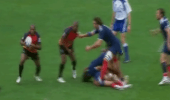 0:34
0:34
Sevens - Turnovers and move the ball 4
From a turnover in contact the attackers pass the ball wide one way and then a deep wide pass back in the other direction to pull the defence out of shape and create an opportunity to attack. Key factors : Wide flat pass - Players support from depth - Deep wide pass - Running and swerving past the defender
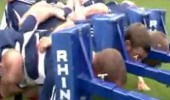 0:30
0:30
British Lions - play from wheeled scrum going left
Developing play from the scrum is an important part of the understanding of how the scrum is part of a gameplan
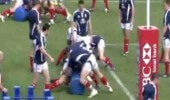
British Lions - tackle then jackal then clear out
This technique proved so successful they adjusted the rules to prevent its use, what was the rules change and can you coach it?

